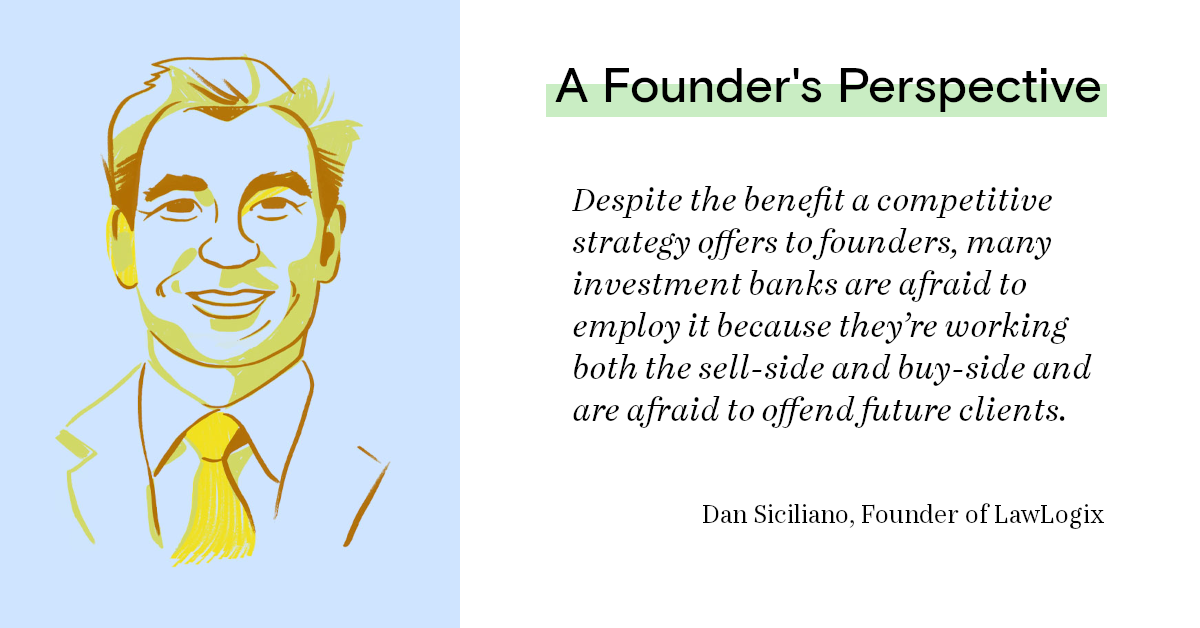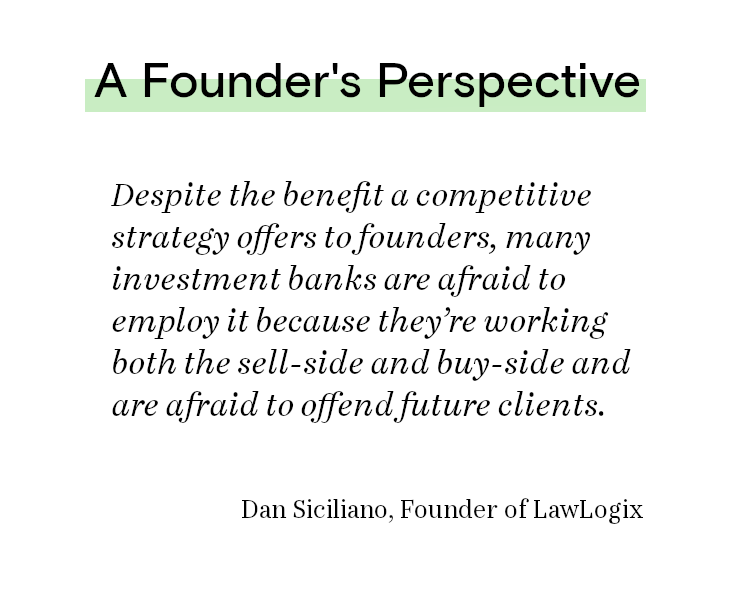The Difference Between the Buy-Side and Sell-Side in M&A
- What differs between the two sides of an M&A process
- Why founders looking to sell should hire an investment bank that works exclusively on the sell-side
As a founder, navigating an M&A transaction is less intimidating if you understand the dynamics of the parties involved. Learn about the interests and strategies of the parties operating on the buy-side vs. the sell-side of a transaction.
Buy-Side vs. Sell-Side in M&A
Fundamentally, the difference between buy-side and sell-side is straightforward: one party is buying, the other party selling.
Something less obvious is that a given party can operate on the buy-side or the sell-side of a transaction, depending on the circumstances and timeline. For example, a private equity firm who acquires shares in a company on the buy-side will eventually move to the sell-side when the time comes to liquidate their investment. Founders and strategic buyers can also operate on either side of an M&A transaction as buyers or sellers.
Buyers and sellers are rarely the only two parties involved—investment banks also play an important role in the M&A process, and can advise on either the buy-side or sell-side.
Buy-Side vs. Sell-Side Investment Banking
In order to improve the probability of a closed deal with favorable terms, parties on both the buy-side and sell-side will often hire an investment bank or M&A advisor to execute the transaction. Sellers hire a sell-side M&A advisor to negotiate with buyers on their behalf, and vice versa.
The role of a buy-side investment bank
Buy-side investment banks are usually contracted by large strategic acquirers or private equity firms to search for companies they can acquire or invest in, as well as to evaluate the integrity of a potential investment. Their goal is to optimize contract terms for the buyer while also closing a successful deal.
Some techniques a buy-side advisor will use to improve outcomes for their clients include:
- Limiting competition for a target company through exclusivity agreements
- Anchoring with founders and key decision makers at the target company to improve the likelihood of a closed deal
- Optimizing equity structures and payment terms (e.g. stock, deferred payments, earnouts) to the benefit of the buyer
- Instituting minority deal protections when buying a minority stake
The role of a sell-side investment bank
Sell-side investment banks are most often retained by founders and private equity firms to liquidate all or a portion of their equity in their company. Founders who hire a sell-side firm recognize that an experienced investment bank will be better positioned to negotiate with an experienced buyer during the transaction process.
Some techniques a sell-side advisor will use to improve the final outcome for their clients include:
- Creating competition between buyers
- Keeping their client out of exclusivity for as long as possible
- Framing the company’s metrics to shine the best light on performance
- Having hard conversations with buyers (so as to improve deal terms while allowing sellers to maintain positive relationships for post-transaction partnerships)
- Building and leveraging synergies between the two organizations to achieve greater outcomes
Special note: sell-side due diligence
An area in which a sell-side investment bank brings a lot of value is during the due diligence phase. Due diligence is when an interested acquirer or investor will dig into a target company’s data and documents to verify the quality of the company’s earnings and uncover any unknown liabilities. Founders often find this experience a grueling process, but much less so when they have an investment bank in their corner to support them.
Could an investment bank advise on both the buy-side and sell-side?
In many cases, investment banks offer advisory services for either side of a transaction, meaning in one transaction they represent a seller and in another a buyer.
Banks that offer both buy-side and sell-side advisory services often position this combo as desirable, arguing that by advising on the buy-side they better understand the needs and goals of strategic acquirers when advising on the sell-side.
What these banks fail to acknowledge, however, is that by operating both sides of the table, they create a strong conflict of interest when representing founders on the sell-side.
In other words, because private equity firms and strategic buyers are repeat players in M&A, staying in their good favor means repeat business for buy-side advisors. As such, a bank who offers both buy-side and sell-side services doesn’t want to play hardball with a large buyer on a seller’s behalf, because next week the bank wants to do business with that buyer. This conflict of interest results in suboptimal deal terms for founders selling their business because the advising bank has a disincentive to make the deal process competitive.


Similarly, this conflict arises for banks who advise exclusively on the sell-side, but who offer their services to private equity firms on the sell-side. When advising founders on the sell-side, such a bank has an incentive to favor private equity buyers whom they could run a larger secondary transaction for a few years down the road.
For founders evaluating potential investment banks to hire, a red flag they should look for is whether the bank offers advisory services on both the buy-side and sell-side, or if the bank offers sell-side services to private equity firms. You want to make sure to hire an unconflicted investment bank.
Navigating the Sell-Side M&A Process
Most founders will be new to running an M&A transaction and as such will have many questions. The most common questions they have are:
- When is the right time to sell my business?
- Should I hire an investment bank?
- How do I prepare my company to sell?
- How can I achieve the best outcome in the sale of my business?
- What do I need to know about due diligence?
For answers to these questions and to get a sense of what the full sell-side M&A process is like, take a look at the For Founders: The M&A Process section of our site. To see in detail what the M&A process looks like after signing an engagement letter with an investment bank (including average timelines), take a look at our article about the deal process.